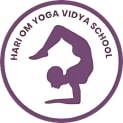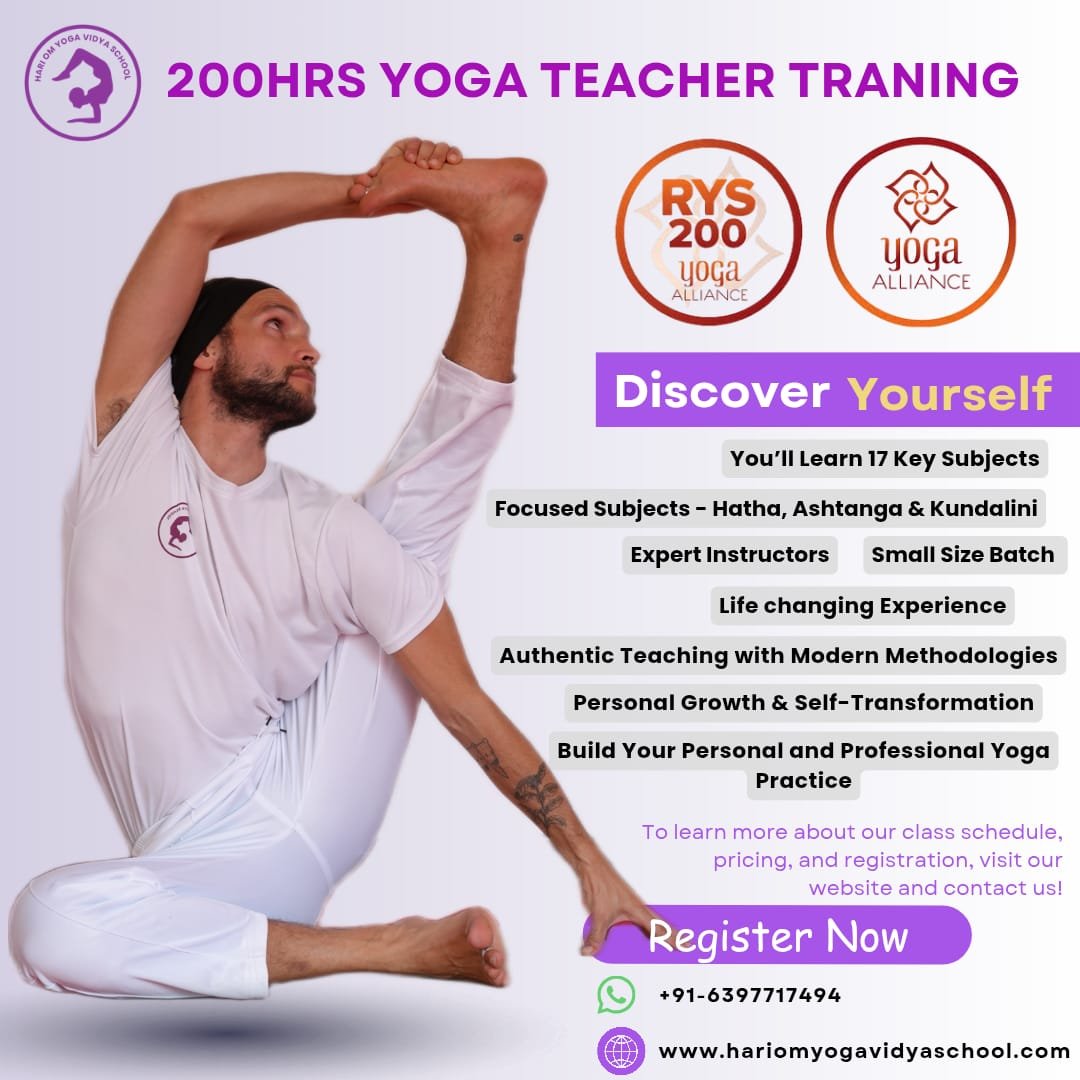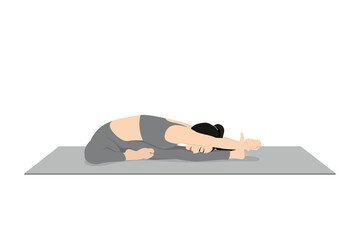Janusirsasana – Head To Knee Pose
Janusirsasana A – Head To Knee Pose
Janusirsasana is an amazing head-to-knee pose, which is a part of the Ashtanga Primary series. Janusirsasana is mainly an asymmetric forward-bending pose that involves stretching and twisting the body. You can address it as a beginner’s pose. The main target of the Janusirsasana are the neck, hips, lower back, and hamstrings. Moreover, it happens to be one of the poses, where you twist and fold the body at the same time. The name Janusirsasana, has Sanskrit origins as with other yoga asanas.
‘Janu’ means ‘knee’, and ‘Sirsa’ means ‘head’, and ‘asana’ means ‘pose’. So, that defines Janusirsasana for you. You will find a mention of this yogic pose in the Vedic texts that go back to the 20th century. You have to perform the asana, by bending forward over your leg, one side at a time, and the bring the forehead in contact with the knee. It leads to self-reflection as per Yoga Darshan. Moreover, you will be privy to inner peace, as you continue to practice and perfect this pose. It is also known as a restorative pose. Let us find out all the facets of this Ashtanga Primary Series Asana.
Read More: Why Is Kundalini Yoga Dangerous? The Truth About Its Risks and Rewards
How To Do the Asana?
Now, you shall know the exact steps to achieve that calmness that we were talking about.
You can perform the pose easily, and that is probably one of the reasons, why it is considered as a beginner’s pose.

- You have to sit with both your legs stretched out in front of you.
- In the next step, you have to bend the right leg at the knee, and place the right foot against the inner portion of the left thigh. All this while, you should keep the knee as relaxed as possible.
- In the next step, you have to inhale deeply, and straighten the left leg completely and press it against the floor. All this while, you have to sit with your spine straight.
- Then, you have to twist your upper body slightly, so that your upper body or torso faces the outstretched left leg. Fold or bend forward while exhaling, from the hip area.
- Your spine should feel like it is been elongated, yet it should be straight. Relax your shoulders in the process.
- After you have fixed the position, you need to hold the toes of your left foot, with both your hands.
- Hold the pose for a good 20-30 seconds.
- Inhale deeply and slowly come back to the original position. Repeat the same steps on the other side.
Modifications
If you feel that the pose is challenging for you, then you can bring in some modifications. Here are a few of them for you.
- If you are unable to hold your feet or big toe with both hands, you can hold it with the hand that is on the side of the outstretched leg. And, you can keep the opposite hand on the writs of the former, of hold it at the wrist.
- In order to ease the difficulty that you face in forward bending, you can use a blanket under your hips, to raise your body off the ground, a little bit. It will help in tilting the pelvis forward.
- You can also use a folded blanket or a cushion below the folded leg, so that it floats in the air, and the knee and ankle get some support.
You have to keep your Drishti in Hastagrahe or Padayoragre, while you practice the Janusirsasana. Moreover, you have to practice looping breathing or Ujjayi breathing pattern.
Safety Precautions Decoded
You need to follow certain guidelines, to do the asana.
- If you experience sudden lower back pain, then you can use props like cushions, blankets and yoga straps to make it easy for you.
- Always remember not to slide the folded leg’s foot below the outstretched leg’s thigh. Press it against the inside of the groin area.
Who Can Do This Asana and Who Cannot?
There are poses which a few people can practice without difficulties, and a few that need a lot of practice. Janusirsasana is a beginner’s pose, which you can modify and change according to your fitness levels. All those who can do it are:
- Children
- Old people
- People with digestive issues
- People who want to improve the flexibility of their joints
- Those who are overweight
- And all those who suffer from chronic stress.
- If you have liver and kidney problems, then also you can do this pose.
However, a section of the population will not be able to do the asana. They include:
- People who have problems in the respiratory organ cannot do this posture.
- If you are suffering from diarrhoea, you should refrain from doing this posture.
- If you have lumbar disc hernia, you should refrain from doing the posture.
- Avoid the asana by all means, if you are pregnant.
- If you have chronic joint pains and stiffness, you should avoid the asana.
- Anybody who has injuries in the knees, hands, legs or the back, should avoid this asana.
Benefits of Janusirsasana
Janusirsasana has a lot of benefits, if practiced on a regular basis. The various benefits are listed below:
- Janusirsasana provides strength and flexibility. It is the best posture for you, if you want to give a deep stretch to the muscles. Moreover, you will be involving many muscles altogether, like that of the neck, shoulders, abdomen, hamstrings and groin. Thus, your flexibility improves in the long run.
- Janusirsasana also solves your digestion issues. The abdomen experiences a deep pressure, when you bend forward. All the organs located in the abdomen, gets a thorough massage, and thus the efficiency of the stomach muscles increases.
- The hormonal balance is maintained. The forward bend exerts a lot of pressure on the kidney, liver, spleen, and pancreas. Thus, it leads to the release of hormones in the process. The uterus is also impacted in a positive manner.
- You will also get rid of menstrual cramps, when you practice the asana on a regular basis.
- You can have your mental blockages cleared, since it is a restorative pose. Thus, you can get rid of mental blockages and disorders. Many people have reported alleviation of stress, anxiety, and depressive symptoms as well.
Janusirsasana Variations Steps To Do
Janusirsasana B
It is the second variation of the original one.
It is a variation that includes the same posture as in version A, but you have to sit on the heel. The heel seating, stretches the hamstrings more than the version A. It also increases the awareness of the practitioner, toward the pelvic floor area. It requires a lot of core strength to perform the posture. Each variation works on a variety of hip angles and heel variations.
- In Janusirsasana, you have to lift your body, and stretch out one leg forward. The heel should touch the perineal muscles. The other leg is folded at the knees.
- The thighs are at a 90-degree angle to one another.
- After you start in the front legs stretched seated posture, you need to take the support of your hands to move to the above posture. Bend your hands at the elbows to position your pelvis on the top of the foot.
- After you have locked the position, of sitting on the heel, either touching the anus or the perineum, you have to slowly bend your torso forward. The toes point forward under the bent leg’s thighs.
- Remember to keep your spine straight and elongated. Draw your head away from the ribs, to lengthen the muscles of your neck. It also helps to opens up the chest muscles. You can feel more comfortable in this pose, by drawing the belly inwards.
- While reaching out your hands towards the feet, you can rest them on the floor as well, for added balance. You can either touch the big toe, with both hands, or hold the arm over the straight leg, with the one that is above the folded leg.
- You may continue to hold the position, while lowering the hips slowly to the floor, by removing the heel from underneath your body. Take some rest, before trying on the other side.
Here, you have to exhale 5 breaths while bending the torso forward.
Janusirsasana C
It is the third variation in the series of Janusirsasana.
You may have heard it being referred to as the Head to Knee pose, or Head beyond the Knee pose. Janu as you already know, is the knee, sirsa means the head, and asana is the pose. It is a sequence in the Ashtanga Primary series of asanas. You may need as many as ten years, to perfect the pose. You have to twist your knees a bit, in this asana, which many people perceive as a threat, but it is actually a boon.
- You have to sit with your leg stretched before you. Then, you have to bend your right leg at the knee and place the heel close to the pelvis.
- You have to turn the toes toward the ground, and the heel upwards. Propel yourself toward the front, with support from your hands. The heels should be above the toes.
- You have to slowly bend your torso, towards the left foot, and hold the big toe with both hands. Exhale while bending forward. You can also use your right hand to hold the left wrist, crossing over the entire foot. The chin should rest on the calves.
- Hold the pose for some time and then, slowly inhale and come up. Straighten the leg and then repeat on the other side.
Here, you have to exhale 5 breaths while bending the torso forward.
Read More: Everything You Need to Know About Kundalini Yoga Teacher Training
Deepen Your Yoga Practice with Hari Om Yoga Vidya School
Located in the heart of Rishikesh, Hari Om Yoga Vidya School is a place where ancient yogic wisdom meets modern teaching techniques. As a top yoga school in Rishikesh, we are committed to providing authentic, immersive yoga education in a peaceful, spiritual setting. Recognized as one of the best yoga schools in Rishikesh, we offer structured training programs designed to help you evolve in your practice, whether you are a beginner or an experienced yogi.
If you’re searching for a yoga school in Rishikesh that focuses on holistic learning, experienced teachers, and a supportive community, look no further!
Explore Our Yoga Teacher Training & Retreats
At Hari Om Yoga Vidya School, we offer a range of courses tailored for different levels of practitioners:
✅ 100-Hour Yoga Teacher Training in Rishikesh – A foundational course for those looking to begin their yoga journey.
✅ 200-Hour Yoga Teacher Training in Rishikesh – An internationally recognized certification for aspiring yoga teachers.
✅ 300-Hour Yoga Teacher Training in Rishikesh – Advanced training to deepen your practice and refine your teaching skills.
✅ 7-Day Yoga Retreat in Rishikesh – A rejuvenating escape into yoga, meditation, and self-discovery.
✅ 10-Day Yoga Retreats in Rishikesh – A transformative experience that blends yoga, relaxation, and Himalayan serenity.
Join us for a life-changing experience and become part of our global yoga family! 🌿✨





